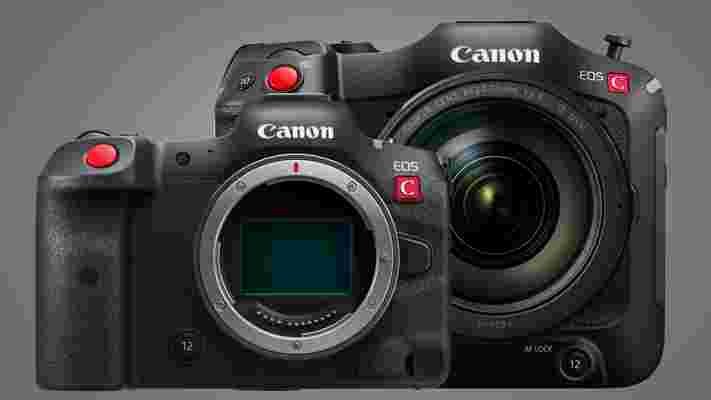Samsung has finally unveiled its 2022 soundbar lineup, and the new Q Series and S Series Dolby Atmos soundbars could be its best-performing yet.
For those after the most premium experience, you’ll want to check out the new Q Series soundbars - Samsung’s flagship line. The HW-Q990B offers 11.1.4 channel sound, meaning it's packed with 11 speakers, one subwoofer, and four vertical speakers to create an immersive 3D sound field using Dolby Atmos .
The subwoofer has received an upgrade too, with a new acoustic lens providing improved low-frequency performance and audio dispersion from older models.
There are also the HW-Q910B and HW-Q800B, which boast a 9.1.2 channel configuration and a 5.1.2 channel setup respectively. All three of these soundbars, when paired with a compatible Samsung TV use Q-Symphony to create an even more impressive performance by playing audio through the soundbar and TV’s speakers simultaneously.
Meanwhile, the S Series soundbars offer a more minimalist design, while still delivering performances that are brought to life with Dolby Atmos and DTS Virtual:X support and a 6.5-inch cubic subwoofer.
Plus, for those of you that believe a speaker should look as good as it sounds, you can choose between the black HW-S800B or white HW-S801B Ultra-Slim Soundbar so that it matches your home decor.
How much will Samsung's 2022 soundbars cost?

Samsung has yet to announce prices for its new soundbars, however, certain models will start shipping in late April - with all its 2022 soundbars available by late June. As such, preorders will likely go live soon, at which point we’ll find out exactly how much Samsung's 2022 Q-Series and S-Series soundbars cost.
You can expect the new range to come with similar price tags to last year's models. The Samsung HW-Q950A cost $1,499.99 / £1,599 / AU$1,999 when it launched in 2021, so we think this year's flagship model, the HW-Q990B, will be in the same ballpark.
That's pretty expensive for a soundbar; even our pick for the best soundbar you can buy today, the Sonos Arc , is far cheaper at $899 / £899 / AU$1,499.
The other soundbars in the new line will probably be much cheaper, but we'll be sure to update this article as soon as we know for sure.
Snap's Pixy drone wants you to Snapchat from the sky - what you need to know
Snap, which long ago rebranded itself as a camera company, is now stepping into the drone space with its new Pixy flying camera.
The creators of the popular social media platform Snapchat like to call Pixy a camera, but it has all the earmarks of a sophisticated consumer drone. Snap unveiled the gadget on Thursday.
With the tap of a button, the drone autonomously flies to a predetermined height (up to 30 ft) along one of four preset paths (set through a dial on top of the gizmo); it then keep its camera trained on you as it captures photos or video. When Pixy is done, Snap says it will automatically land in your hand. Like traditional drones , the roughly palm-sized Pixy has four rotors, which are safely hidden under a bright-yellow body.
It's also clear that Pixy is made for Snapchat and not drone enthusiasts. It appears to do everything itself, including wirelessly transmitting videos to Snapchat Memories (similar to how Snap's Spectacles work). Once there, you can edit the videos with the app's built-in tools -- including effects like Hyperspeed, Orbit, and Jump Cut-- before sharing them on Snapchat.

You do not control Pixy's flight through your phone, nor can you see what the drone sees until the video is downloaded to your phone (Pixy supports Bluetooth, 5G, and 802.11 b,g, n, and ac Wi-Fi).
Image and video transfer are also possible via a USB cable connection, Snap told TechRadar, and you can export your photos and videos to platforms other than Snapchat.
The image quality sounds decent. Inside Pixy is a 20MP sensor that shoots 12MP images and videos of 2.7k at 30 fps. There is some onboard storage, a 16MB flash drive that can hold 100 videos or 1,000 photos.
The Pixy specs
Pixy is considerably lighter than most traditional consumer drones, weighing in at just 101 grams (putting it in the range of a small smartphone). While Snap isn't saying exactly how long Pixy's replaceable battery lasts (in minutes or hours), the battery is good, the company claims, for between five and eight flights. Snap does not say how long each flight might last. Pixy's batteries take 40 minutes for a full recharge (so perhaps you'll want to purchase a backup battery or portable power station ).
Snap representatives told TechRadar that Pixy lacks obstacle detection but will safely land if it unexpectedly hits something. There is, in the updated Snapchat app, a "Land" button if you want to bring Pixy down right away.
Pixy is equipped with some sensors, though. We also learned from Snap that Pixy has a second camera and a sensor on the bottom that detects your hand for landing. It uses the camera on the front to take photos and video, but also to identify your face and body so it can track them for the photos and video.
Snap is already selling Pixy for $229.99 in the US and France, but only while supplies last.
It's a drone
Snap isn't breaking any new ground here when it comes to autonomous drones. But since Pixy requires zero knowledge or the ability to use or control a drone, folks could find it more attractive than, say, the DJI Mavic Air (which is also considerably more expensive).
We've certainly seen other "selfie drones," including this AirSelfie drone at CES 2020 .
Still, no drone has even had such a large potential built-in social media market. Snap is counting on SnapChat members' desperate need for new and exciting ways to share their totally not mundane lives.
By building a drone with no setup and enough intelligence to do all the hard parts (tracking, launch, and landing) for you, Snap might've solved how to grow the drone market with people who have zero interest in drones.
Canon EOS R5 C autofocus defect only affects ‘small number’ of cameras
Canon has confirmed that an autofocus defect that's led to some of its Canon EOS R5 C cameras being recalled in Australia isn't a global problem and only affects a "small number" of units.
Canon Australia recently reported in a public notice that said some EOS R5 C digital cinema cameras had an autofocus defect that meant "the camera may repeatedly go in and out of focus in movie mode". This meant anyone who'd received an affected camera on or before March 21 would need to organize return or replacement.
We contacted both Canon UK and Canon USA to find out of the problem could be more widespread and affect the EOS R5 C outside Australia, and the good news is that, according to Canon, it isn't.
In a statement, Canon UK said: “A manufacturing defect has been detected in a small number of EOS R5 C cameras. This issue has now been resolved and will have no impact on units to be delivered in the EMEA [Europe, The Middle East, and Africa] region.”
Fortunately, it's a similar story in the US, with Canon USA telling us that "Canon Americas EOS R5 C units were updated and corrected before distribution within the territory.”
So, if you live outside Australia and have been coveting Canon's latest video camera, which is effectively a fan-cooled version of the Canon EOS R5 C, you can still forge ahead without any concerns about its autofocus. Well, if you can find it in stock – the camera is currently out of stock in the UK, and only available for pre-order in the US ahead of a planned shipping date of April 4.
Analysis: A small blip for a big hybrid camera

The minor nature of the Canon EOS R5 C's autofocus issues is good news for one of the camera giant's biggest launches of the year, as it could scarcely afford a major recall.
The launch of the Canon EOS R5 was blighted by overheating issues that were subsequently improved by firmware updates, although some of these problems were in part down to unrealistic expectations of what's possible from a relatively compact mirrorless camera.
The EOS R5 C, which swaps the EOS R5's in-body stabilization for fan-cooling, shows the kind of heat management that's required for continuous 8K video recording. And it promises to shoot 8K/25p raw internally for an impressive 50 minutes, or 4K/50p video for 35-40 minutes.
Given it's such a video-focused camera, the EOS R5 C could have been derailed by a major focusing issue in movie mode, but that fortunately only affects a small number of units in Australia. All it has to do now is negotiate the chip shortages that have blighted most mirrorless cameras so far this year.